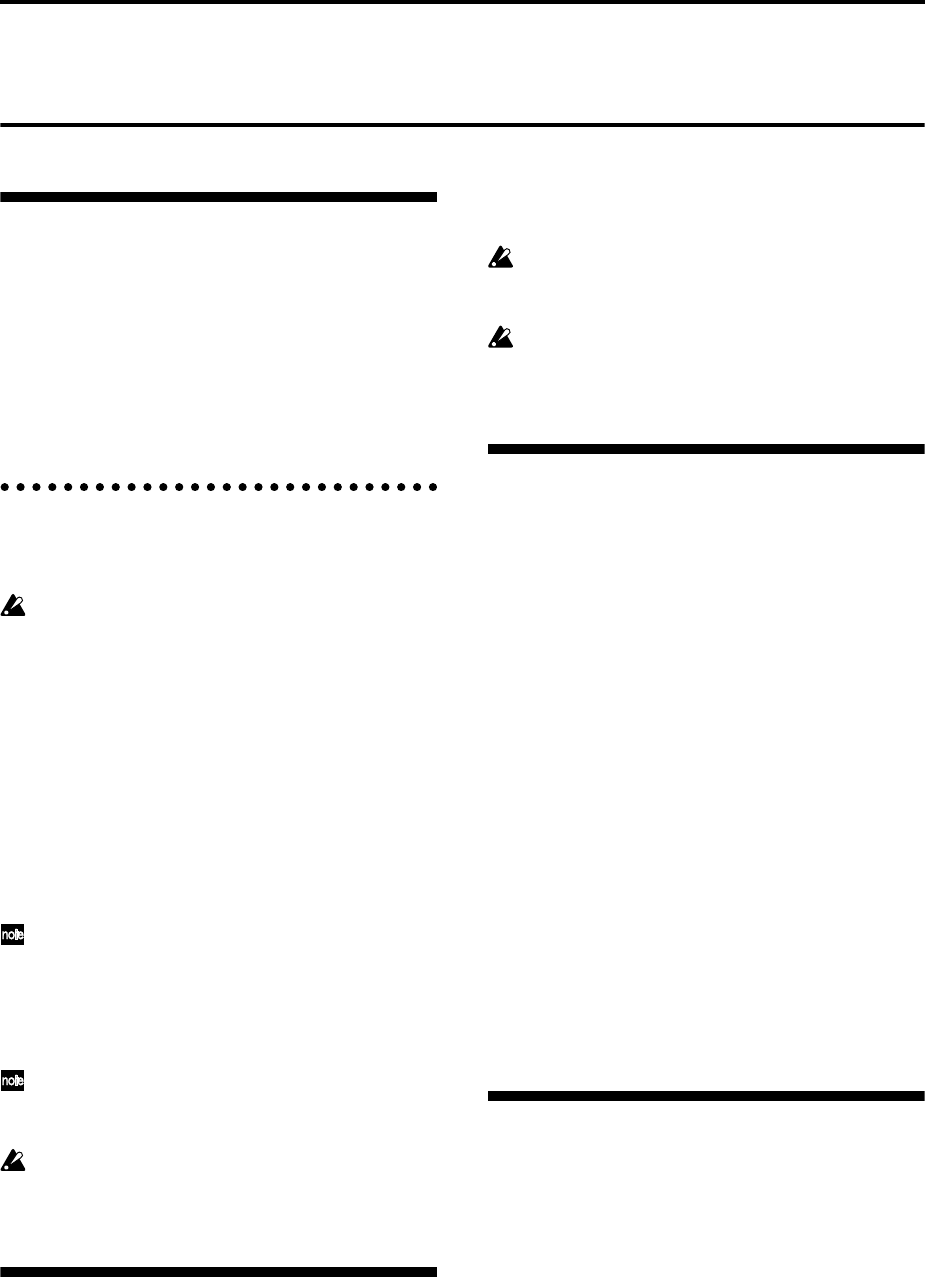
100
Media mode
How Media mode is organized
In Media mode you can use an SD card or a connected
external SCSI device (if the separately sold EXB-SMPL
is installed) to save or load various types of data. You
can also make settings related to saving and loading
functionality.
For details on connecting an external SCSI device and
setting the SCSI ID, refer to refer to the manual
included with the EXB-SMPL.
Media that can be used
SD card
The SD card is not included. It must be purchased
separately.
The TR supports SD cards with a power supply volt-
age of 2.7–3.6V and capacities of 16 MB - 1 GB, and SD
card with ID.
External SCSI storage media
If the EXB-SMPL option (sold separately) is installed,
the TR can save data on external SCSI media (maxi-
mum 4 GB) such as a hard disk, Zip, Jaz, ORB, or MO
drive.
When the EXB-SMPL option is installed, an external
SCSI device of up to 4 GB can be formatted.
When you insert media for the first time after turn-
ing on the power, or after changing disks, you
must press a function key etc. to make the TR
detect the media. When the disk (or other media)
is recognized, media information will appear in
the LCD screen.
If more than one volume of media is currently rec-
ognized, select “Media” and use the [INC]/[DEC]
keys to switch between media.
The TR cannot format media with a format of other
than 512 bytes/block (such as 640 MB, 1.3 GB MO
disks etc.).
Formatting media
SD card or external SCSI media (via the EXB-SMPL
option) must be formatted.
Newly purchased media or media that has been used
by another device cannot be used immediately on the
TR. It must first be formatted for use on the TR.
The TR supports MS-DOS format.
For the formatting procedure, refer to “Format” (
☞PG
p.156).
Media must be formatted. SD cards or external
SCSI media that was formatted on a device other
than the TR may not be recognized correctly.
It is not possible to format media of other than 512
bytes per block (e.g., 640 Mbyte or 1.3 Gbyte MO
disks).
SD card handling
• The SD card may be hot immediately following use.
Power-off the TR and wait for the card to cool
before removing it.
• SD cards are precision parts. Do not bend them,
drop them, or subject them to physical shock.
• Avoid using or storing SD cards in locations of
extremely high or low temperature such as in direct
sunlight, a closed automobile, or near a heater, or in
locations of high humidity or excessive dust.
• Avoid using or storing SD cards in locations where
they may be subject to strong static electricity or
electrical noise.
• Do not allow dirt or foreign matter to adhere to the
contacts of an SD card. If the contacts should
become soiled, gently wipe them off using a dry
cloth.
• When you are not using an SD card, keep it in the
protective case that was included with the card to
prevent it from being damaged by static electricity.
• Do not leave an SD card where it is accessible by
infants or children who might place it in their
mouth and swallow it.
• Carefully read and observe the owner’s manual
included with your SD card.
About the write protect setting of
an SD card
SD cards have a write protect switch that prevents the
data from being overwritten accidentally and lost. If
you set the card’s switch to the “protected” setting, it
will be impossible to write or erase data on the card, or
to format it. If you need to save edited data on the card,
move the switch back to its original “unprotected” set-
ting.


















